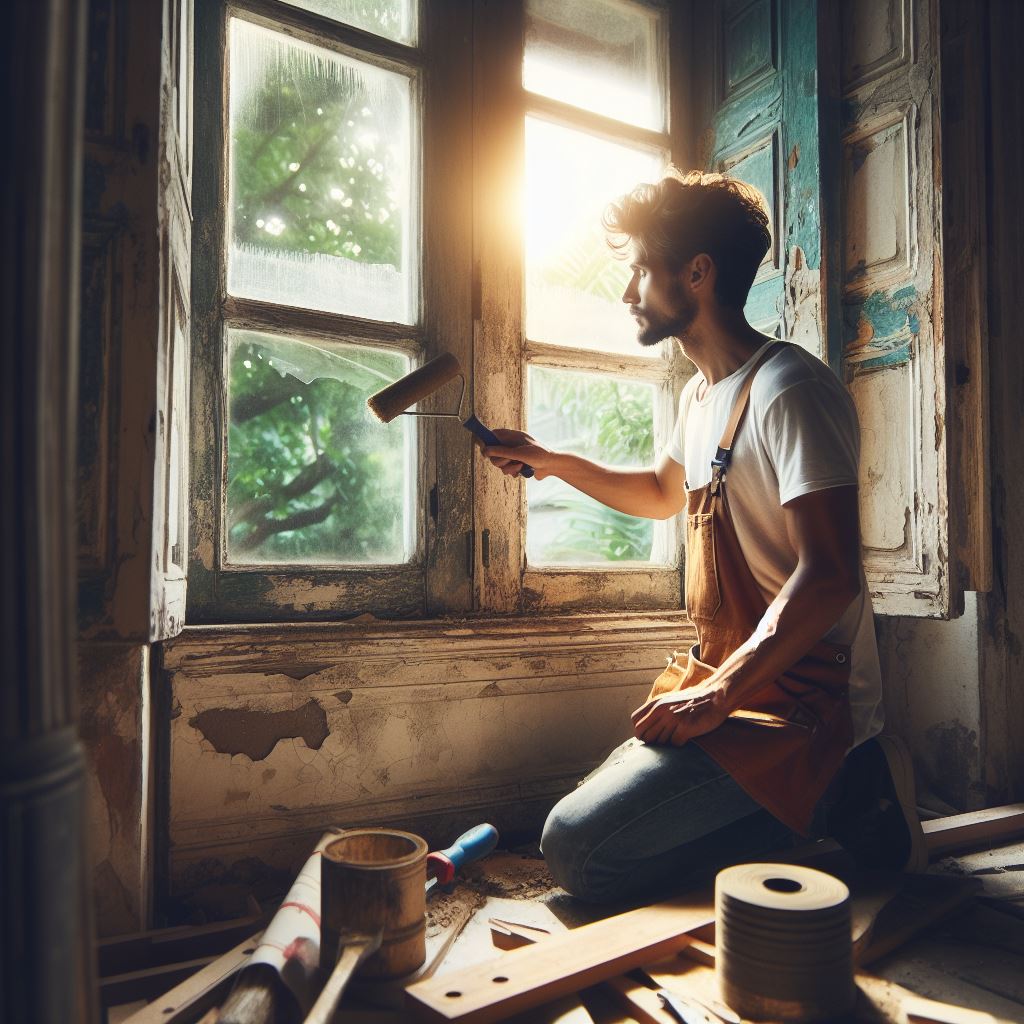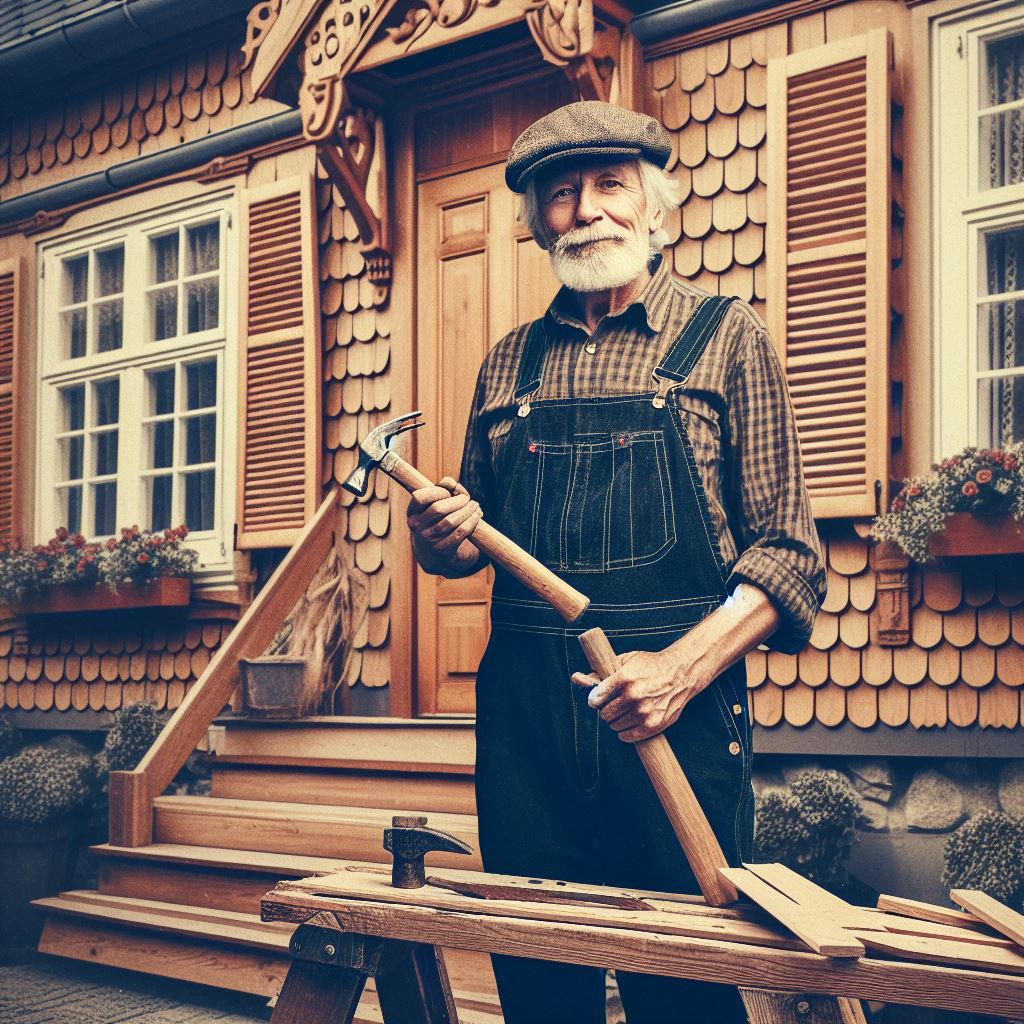Introduction
Preserving historic buildings is paramount, and within these architectural gems, windows stand as integral elements.
The decline in historic window restoration techniques is a concerning trend.
Windows serve as the eyes of a building, offering glimpses into its past and contributing to its overall character.
As technology advances, traditional craftsmanship often takes a backseat.
The neglect of historic window restoration techniques not only erodes the charm of heritage structures but also jeopardizes their structural integrity.
Today, modern replacements are favored over the painstaking art of restoring original windows.
However, it’s crucial to recognize that historic windows are more than mere aesthetic elements.
They encapsulate the spirit of a bygone era, showcasing craftsmanship and design techniques that are a testament to the skill of artisans from centuries past.
The authenticity of these windows adds immeasurable value to the historical narrative woven into the fabric of the building.
Preservation efforts extend beyond a nostalgic yearning for the past; they are an investment in cultural continuity.
The loss of historic window restoration techniques equates to a loss of cultural heritage.
Each weathered frame and handcrafted pane tell a story of craftsmanship and endurance.
In this post, we delve into the significance of preserving historic windows.
As we explore the decline in restoration techniques, it becomes evident that safeguarding these architectural relics is not just about the past but also about building a future that values and learns from its history.
Understanding Historic Windows
When it comes to historic windows, it is important to have a clear understanding of the different types and materials used in their manufacturing.
This knowledge is crucial for effective restoration techniques.
Historic Window Types
- Sash Windows: These are windows consisting of one or more movable panels called sashes.
- Casement Windows: These are windows that are attached to their frame with hinges at the side.
- Awning Windows: These are windows that are hinged at the top and open from the bottom, creating an awning-like appearance.
- Transom Windows: These are windows located above doors or other windows to allow additional light inside.
- Bay Windows: These are windows that project outward from the main walls of a building, creating a bay or alcove.
Understanding these different historic window types is crucial for any restoration project.
Each type requires specific techniques and materials to preserve their historical and architectural integrity.
History of Window Manufacturing Materials
- Wood: Wood has been the primary material used in window manufacturing for centuries. It offers a classic aesthetic and can be easily repaired and restored.
- Glass: The introduction of glass revolutionized window design, allowing natural light to enter buildings.
- Iron: In the 18th and 19th centuries, the use of iron in window manufacturing became popular for its strength and durability.
- Steel: Steel windows gained popularity in the early 20th century due to their sleek and modern appearance.
- Aluminum: Aluminum windows emerged in the mid-20th century as a lightweight and low-maintenance alternative.
- Vinyl: More recent window manufacturing materials include vinyl, which is known for its energy efficiency and cost-effectiveness.
Knowing the historical context of window materials helps restorers determine the appropriate materials to use during the restoration process.
The goal is to maintain the original aesthetics while ensuring longevity.
In fact, understanding the different types of historic windows and the materials used in their manufacturing is essential for effective restoration techniques.
Whether it’s sash, casement, or awning windows, each requires specific knowledge and approaches to preserve their historical significance.
Additionally, being aware of the evolution of window materials, from wood to vinyl, allows restorers to make informed decisions that balance authenticity and functionality.
By incorporating these insights, historic window restoration projects can successfully breathe new life into these architectural gems while honoring their unique past.
Read: Renovation Tax Credits for Historic Homes
Common Issues with Historic Windows
Preserving and restoring historic windows requires addressing various common issues through active and transitional approaches.
These issues are often the result of decay, lack of maintenance, and exposure over time.
Decay and rot due to exposure and lack of maintenance
Historic windows are often exposed to harsh weather conditions, including rain, snow, and sunlight.
If not properly maintained, these windows can develop decay and rot, compromising their structural integrity.
Regular maintenance, such as cleaning, painting, and sealing, can help prevent decay and rot.
Broken or missing glass panes
One of the most common issues with historic windows is broken or missing glass panes.
Accidents, natural disasters, or the passage of time can cause this, leading to wear and tear.
Replacing broken or missing glass panes requires careful matching of the original glass, including its thickness, color, and texture.
Damaged joints, hardware, and glazing putty
Over time, the joints, hardware, and glazing putty of historic windows can become damaged.
These components are essential for the proper functioning and weatherproofing of the windows.
Restoring damaged joints, hardware, and glazing putty requires skilled craftsmanship and attention to detail.
Paint and finish deterioration
The paint and finish of historic windows can deteriorate over time due to exposure to the elements.
Peeling, cracking, and fading of the paint and finish not only affect the aesthetics but also the protection of the windows.
Stripping and repainting historic windows require careful consideration of the original colors and materials used.
Preserving and restoring historic windows is crucial to maintaining the overall historical integrity of a building.
Adressing these common issues requires specialized knowledge, skills, and techniques.
Restore historic windows to their original charm and function by actively addressing decay, rot, broken glass, damaged joints, and deteriorated paint.
Collaborate with specialists in historic window restoration for precise techniques and materials, ensuring the right approach is taken.
This will not only enhance the longevity and value of the windows but also contribute to the preservation of our architectural heritage.
Read: Old House Insulation: Best Practices
Traditional Restoration Techniques
Assessing the condition of the window and identifying necessary repairs
Restoration starts with a thorough assessment of the window’s condition. This involves examining the wood for decay, rot, or any other damage.
The goal is to identify the necessary repairs that need to be made.
Techniques for removing old paint and finishes without damaging the wood
Removing old paint and finishes is a delicate process. Care must be taken to not damage the wood underneath.
Techniques such as scraping, sanding, and applying heat are often used to strip away the old layers.
Repairing decayed or rotted wood using epoxy consolidants and wood fillers
Repairing decayed or rotted wood is crucial to ensure the structural integrity of the window.
Epoxy consolidants and wood fillers are commonly used to reinforce weakened areas and restore the wood to its original strength.
Replacing broken or missing glass panes with matching historic glass
When it comes to replacing glass panes, it is essential to use matching historic glass.
These can be sourced from salvaged windows or specially made to match the original design. The new glass should blend seamlessly with the rest of the window.
Repairing or replacing damaged hardware and joints
Hardware and joints can become damaged over time. In restoration, damaged pieces are repaired if possible.
Otherwise, they are replaced with similar or replica hardware to maintain the historic authenticity of the window.
Applying traditional glazing putty to secure glass panes
Traditional glazing putty is an important component of window restoration. It is applied to secure the glass panes in place.
The putty is carefully shaped and smoothed to create an airtight seal.
Properly priming and painting the window frame
The final step is properly priming and painting the window frame.
This not only enhances its appearance but also adds a layer of protection against moisture and other elements.
Historic colors and finishes are often used to maintain authenticity.
In short, traditional restoration techniques for historic windows involve a comprehensive approach.
Assessing the condition, removing old paint, repairing wood, replacing glass, fixing hardware, applying glazing putty, and painting the frame are all crucial steps in the process.
Read: Preserving Character in Home Remodels

Modern Approaches to Historic Window Restoration
In recent years, there have been several modern approaches to historic window restoration that have revolutionized the field.
These approaches combine advancements in materials and tools, the use of weatherstripping and insulation techniques, and the balancing of preservation with modern performance standards.
Advancements in Materials and Tools
One of the key aspects of modern historic window restoration is the use of advanced materials and tools.
More durable and long-lasting options have replaced traditional materials like wood putty and glazing compound.
Epoxy-based products, offering superior strength and flexibility, now widely repair structures. They’ve become a go-to choice.
Additionally, modern tools such as oscillating multi-tools have made the restoration process more efficient.
These tools can easily remove old paint and glazing while minimizing damage to the surrounding materials.
Use of Weatherstripping and Insulation Techniques
Employing weatherstripping and insulation enhances energy efficiency in historic windows. These techniques are now commonly used for improvement.
Weatherstripping helps to seal gaps between the window sash and frame, preventing drafts and heat loss.
This is particularly important for older windows that may have warped or deteriorated over time.
Insulation techniques, such as applying low-expansion foam or installing double-glazed panels, can further improve the window’s thermal performance.
These methods help to reduce air infiltration and heat transfer, making the building more comfortable and energy-efficient.
Balancing Preservation with Modern Performance Standards
While historic window restoration aims to preserve the original architecture and character of a building, it is also necessary to meet modern performance standards.
This involves finding a balance between preservation and functionality.
For instance, historic windows may not offer the same level of noise reduction or security as modern windows.
Install secondary glazing for enhanced soundproofing, increased security, and preservation of original windows in such cases.
Furthermore, modern approaches prioritize the retention of original materials whenever possible.
This includes repairing rather than replacing damaged elements and ensuring that any replacement components match the historic design and craftsmanship.
Overall, modern approaches to historic window restoration have transformed the field, offering more durable materials, efficient tools, and improved energy performance.
By striking a balance between preservation and modern functionality, these techniques ensure the long-term sustainability and usability of historic windows.
Read: Eco-Friendly Upgrades for Old Houses
Preservation Guidelines and Resources
Preserving historic windows requires following specific guidelines and utilizing valuable resources.
This section will highlight national and local organizations that focus on historic window restoration, discuss important preservation guidelines, and provide resources for finding qualified professionals and workshops.
National and Local Organizations
When undertaking historic window restoration, it is crucial to seek guidance and support from organizations specialized in this field.
Here are some renowned national and local organizations:
- National Trust for Historic Preservation: This organization offers information, advice, and resources for preserving historic windows.
- National Park Service: The NPS provides guidelines and technical assistance on window restoration, following the Secretary of the Interior’s Standards for Historic Rehabilitation.
- Historical Window Preservation: A local non-profit organization dedicated to educating and advocating for the preservation of historic windows in our community.
- Historic Preservation Office: Local government entities often have dedicated offices that provide guidance and support in preserving historic structures, including windows.
Important Preservation Guidelines
Preservation guidelines are essential to ensure the appropriate restoration of historic windows. The following guidelines are widely recognized:
- Secretary of the Interior’s Standards for Rehabilitation: These standards outline the principles and guidelines for preserving and rehabilitating historic properties, including windows.
- Retain original materials: Whenever possible, original window materials should be retained rather than replaced.
- Repair over replacement: Repairing damaged windows using appropriate techniques is preferred over full replacement.
- Historic accuracy: Any replacements or additions to the windows should match the historic design, materials, and craftsmanship.
Resources for Finding Qualified Professionals and Workshops
Performing a successful historic window restoration often requires the expertise of skilled professionals.
The following resources can help you find qualified individuals and workshops:
- Historic Preservation Society: Local or regional societies often maintain directories of preservation professionals.
- Online directories: Various websites provide searchable databases of professionals specializing in historic window restoration.
- Trade organizations: Organizations like the Window Preservation Alliance offer resources and directories of professionals in the field.
- Historic window restoration workshops: Look for workshops or courses that provide hands-on training in historic window restoration techniques.
Attending workshops can enhance your knowledge and skills in restoring historic windows and offer opportunities to network with experts in the field.
In a nutshell, preserving historic windows calls for adherence to preservation guidelines and the utilization of valuable resources.
By seeking guidance from national and local organizations, following established guidelines, and finding qualified professionals and workshops, you can ensure the successful restoration and longevity of these historic architectural elements.
Conclusion
Historic window restoration stands as a crucial pillar in safeguarding the essence of our cherished historic buildings.
This process breathes life into the architectural narratives embedded in each pane and frame, fostering a connection to bygone eras.
Restoring historic windows is of utmost importance, and one cannot overstate the significance. Emphasize the vital role they play in preserving heritage.
These windows are not mere apertures but guardians of stories etched in wood and glass.
Their restoration is a commitment to preserving the tangible links to our architectural heritage.
In every creak and every worn-out hinge, historic windows whisper tales of the past, stories that resonate with the echoes of those who once gazed through them.
The preservation of these windows is akin to preserving a tangible time capsule, an authentic window into history.
Encouraging readers to explore restoration options is not merely an invitation; it is a call to action.
Through restoration, we become custodians of our shared legacy, taking an active role in ensuring that the cultural richness of our built environment endures.
Supporting preservation efforts becomes a civic duty, a responsibility to our collective history.
By embracing historic window restoration, we contribute to the resilience of our architectural identity, allowing future generations to experience the charm and authenticity of the past.
Historic window restoration is more than a technical process; it is a commitment to the soul of our historic buildings.
It is an affirmation that, in preserving our windows, we preserve the very essence of our cultural tapestry.
Let us explore restoration options and unite in supporting preservation endeavors, ensuring that the windows of our past continue to illuminate our architectural journey into the future.




